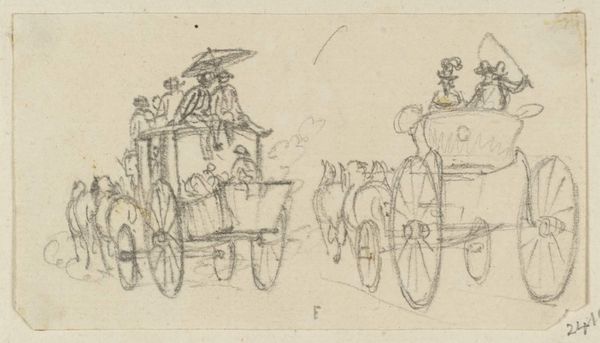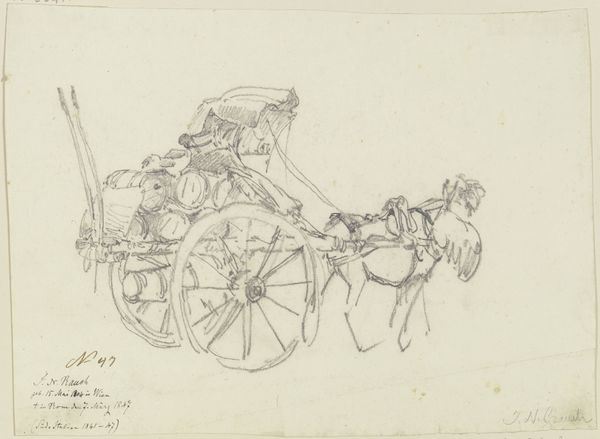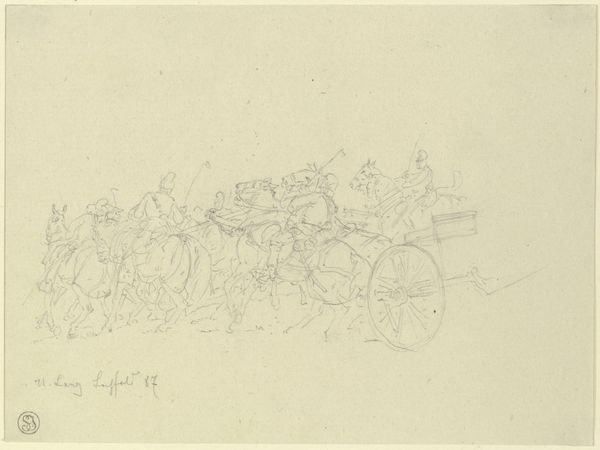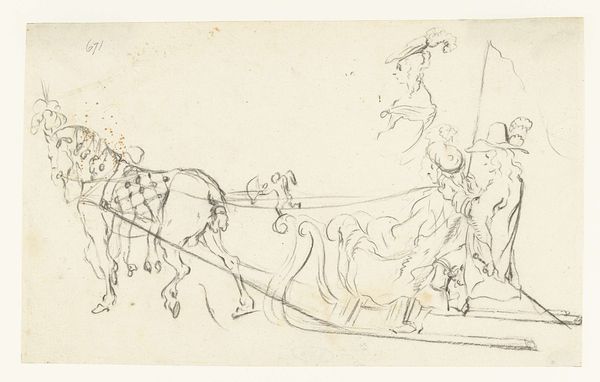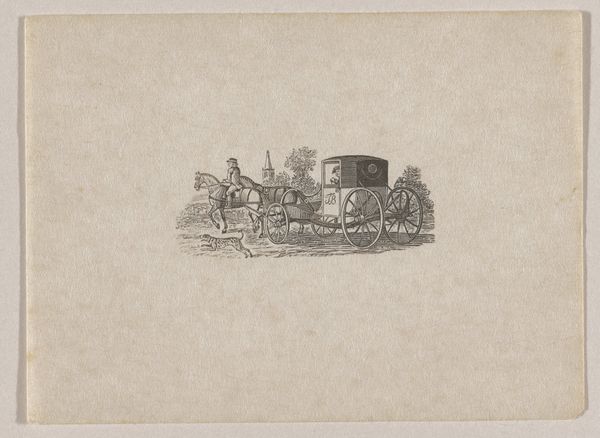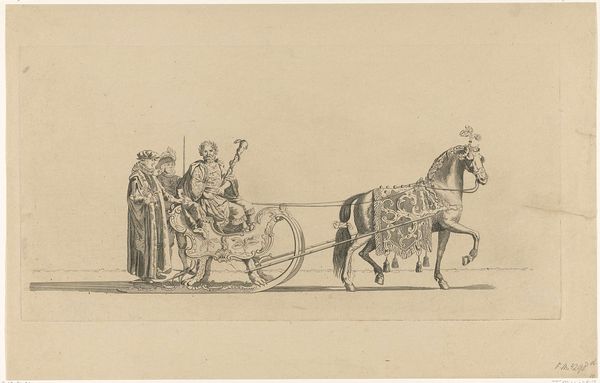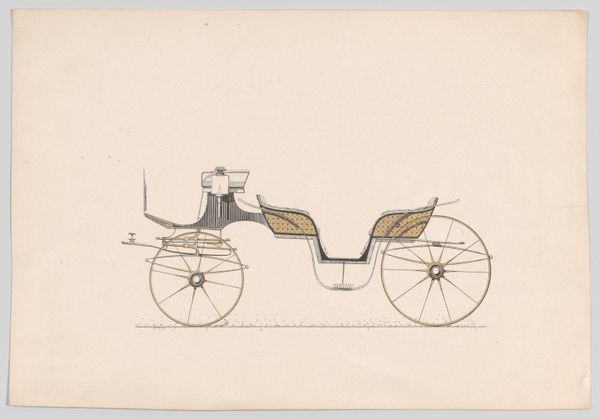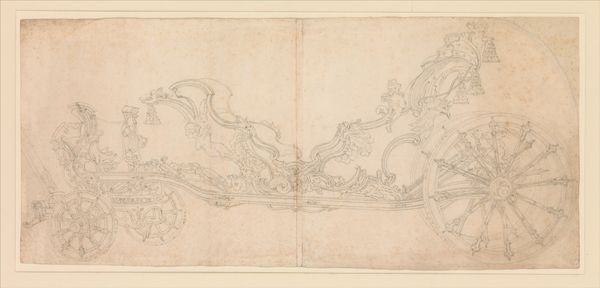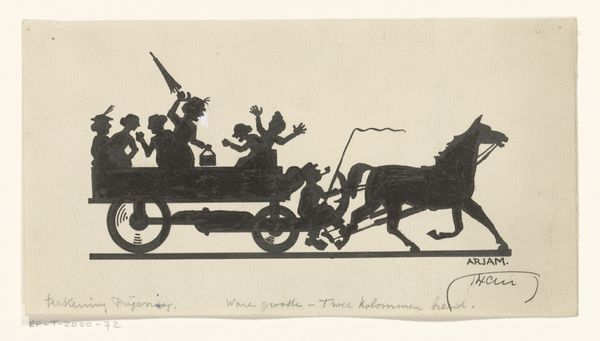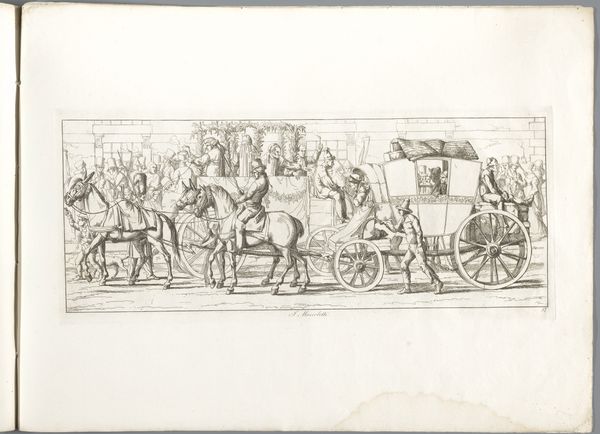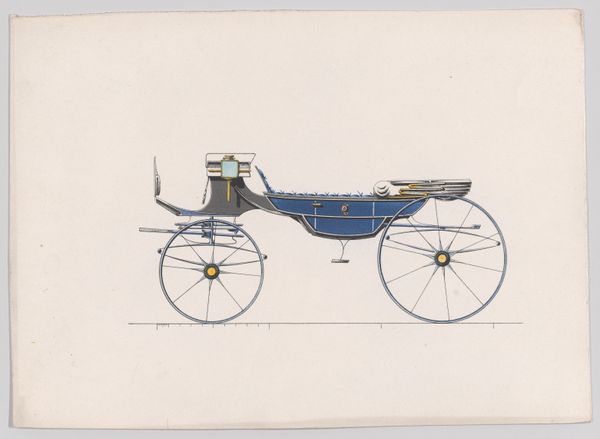
drawing, ink
#
drawing
#
16_19th-century
#
allegory
#
ink
#
german
#
romanticism
#
history-painting
Copyright: Public Domain
Curator: This intricately detailed drawing is called "Allegory on the Steam Power". It’s rendered in ink, brought to life by Johann Baptist Scholl the Younger. Editor: My first thought is how fantastical it feels. Like a locomotive dreamt up by a romantic poet, not an engineer. All those figures intertwined within the wheels and structure. It's quite something. Curator: It's brimming with Romantic sensibility! And a direct nod to the burgeoning industrial age of the 19th century. We must remember the public perception surrounding technological advancements in that time was so dramatic! Editor: The placement of Poseidon, God of the seas is especially poignant at the top, is it not? Implying dominance or harnessing nature for technological process. In what ways could industrial innovations, like steam, disrupt natural patterns of that time? How do you see this narrative intersecting with broader environmental movements? Curator: The artist positions Steam Power not just as a tool, but as an ascendant force reshaping classical understanding. Observe the flurry of motion; allegorical figures swept along by the engine of progress. Its a rather grand spectacle playing out. And considering art’s patronage system throughout history, it’s a question as to who paid to have this produced and why. Editor: And let’s be critical of "progress"! Which communities were hurt by advancements? Where did that steam engine run? Did it carry materials produced by exploited labor? We see here what looks like forward thinking and innovation, but these developments usually occur at the expense of several communities or groups of individuals. The fact this artwork has German origins invites speculation as to that area’s involvement in exploitative global systems. Curator: That is certainly important context for interpreting this allegory. This particular work remains valuable, at least in part, to see through both the optimism and anxieties towards industrial transformations that defined 19th century society. Editor: Indeed. A valuable mirror reflecting society's hopes and the darker undercurrents of advancement. Always consider the true cost.
Comments
No comments
Be the first to comment and join the conversation on the ultimate creative platform.

